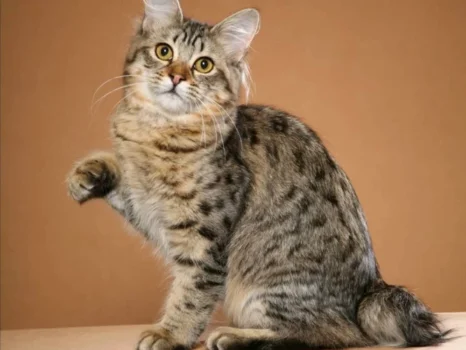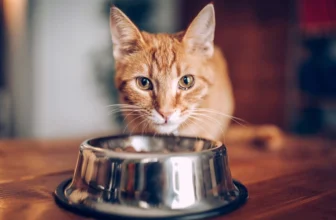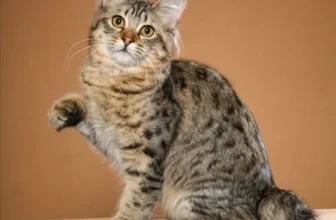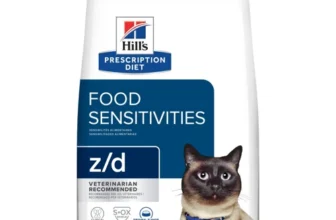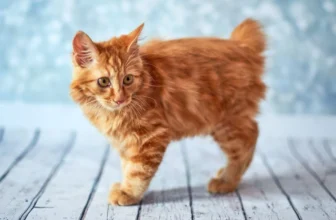American Bobtail cats are a unique breed with distinct nutritional needs. As a pet parent, it can be perplexing to figure out the right diet for your furry friend. What kind of food should they eat? Is dry food better than canned? What ingredients should you be looking for? In this article, we will dive into the nutritional needs of American Bobtail cats, shed light on the link between diet and overall health, and provide you with some tips on how to choose the right food for your cat. Let’s explore the world of feline nutrition together.
Why a Nutritious Diet is Important for American Bobtail Cats
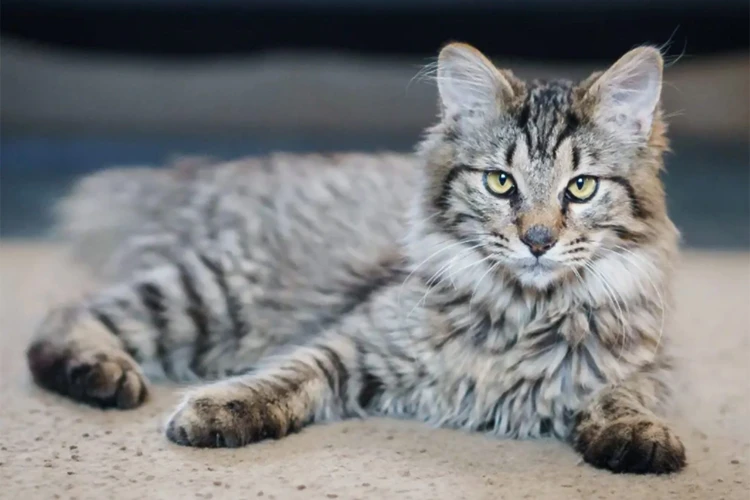
It may seem obvious, but many cat owners underestimate the importance of providing their American Bobtail cat with a nutritious diet. A well-balanced diet is essential for your cat’s overall health, helping to prevent illnesses and ensure a long, happy life. In this section, we’ll delve into the reasons why nutrition is key for American Bobtail cats, exploring the benefits of a healthy diet, the risks of feeding an improper one, and the specific nutritional requirements these cats have. So, let’s explore this topic further and understand why a nutritious diet is crucial for your American Bobtail’s well-being. To learn more about the protein importance for your Bobtail, check this link.
The Link Between Diet and Health
A cat’s diet is closely linked to their overall health and wellbeing. Proper, balanced nutrition is crucial to ensuring a long and healthy life for your American Bobtail cat. Additionally, a diet lacking in essential nutrients can lead to various health problems and even shorten the lifespan of your furry companion.
Proper nutrition strengthens the immune system and helps fight against illnesses and diseases. Nutrients such as vitamins A, C, and E, zinc, and omega-3 fatty acids help to maintain a healthy immune response. A balanced diet consisting of high-quality protein, carbohydrates, and fats can also help prevent obesity in your American Bobtail. Obesity can lead to a number of problems such as joint pain, digestive issues, and diabetes.
The type of food you feed your American Bobtail can also affect their health. For example, dry food tends to have more carbohydrates than wet food, which could lead to obesity if not managed properly. Additionally, raw food diets may carry a risk of bacterial contamination if not handled and prepared properly. However, some raw diets can provide a very high source of essential nutrients for your cat. It is important to carefully consider the pros and cons of different types of diets before making a decision. If you are considering feeding your American Bobtail a raw diet, read more about the pros and cons here or if you are looking for some balanced homemade recipes, read more here.
Another important nutrient for American Bobtails is taurine, an amino acid that is essential for their vision, heart, and overall health. Taurine is found in high levels in animal-based proteins such as meat, fish, and poultry. Without a sufficient amount of taurine, your cat may be at risk of developing heart disease, vision problems and other health issues. Learn more about taurine requirement in American Bobtail’s diet here.
While carbohydrates are an important part of a cat’s diet, they should be consumed in moderation, as some American Bobtails may struggle to digest them properly. Grain-free diets may be beneficial for some cats but there are also some drawbacks that should be taken into consideration. Learn more about them here.
Finally, it is important to note that even the most balanced diet may not contain all essential nutrients that your American Bobtail needs. Cat supplements may be necessary in some cases to meet your cat’s nutritional requirements. However, it is important to consult your veterinarian before using any supplements, as giving too much of certain nutrients can cause more harm than good. Read more about American Bobtail cat supplements here.
Proper nutrition is vital to ensuring a happy and healthy life for your American Bobtail cat. By feeding them a well-balanced diet and providing them with the essential nutrients they need, you can help them to avoid a number of health problems and promote their wellbeing for many years to come.
The Benefits of a Well-Balanced Diet for American Bobtail Cats
A well-balanced diet is essential for the overall health and wellbeing of American Bobtail cats. Here are some benefits of maintaining a proper diet for your feline friend:
- Healthy Body Weight: A balanced diet helps American Bobtail cats maintain a healthy body weight, reducing the risk of obesity and associated health problems.
- Strong Immune System: Adequate intake of essential nutrients boosts the immune system, making American Bobtail cats more resistant to infections and diseases.
- Shiny Coat and Clear Eyes: Proper nutrition helps maintain a shiny coat and clear eyes, indicating good overall health.
- Healthy Digestion: A well-balanced diet promotes healthy digestion and reduces the risk of gastrointestinal problems. It also helps prevent hairballs, which are a common issue for American Bobtail cats.
- Increased Energy: High-quality food with the right balance of nutrients provides the necessary energy for American Bobtail cats to remain active and playful.
- Better Dental Health: Chewing on dry cat food helps scrape off plaque and tartar from American Bobtail cats’ teeth, promoting better dental health.
Feeding your American Bobtail cat with a well-balanced diet can promote good health, increase lifespan and help avoid illnesses. In the following sections, we will discuss the specific nutrient requirements and different types of cat food options that can help you meet your cat’s nutritional needs.
The Risks of Feeding an improper Diet to American Bobtail Cats
Feeding an improper diet to American Bobtail cats can lead to many health risks which can have long-term effects. Below is a table showing some of the risks associated with feeding an improper diet to American Bobtail cats.
| Risk | Description |
|---|---|
| Obesity | A diet high in empty calories can lead to obesity, which can cause a host of other health problems such as joint pain, diabetes, and heart disease. |
| Poor Coat Condition | A diet lacking in essential vitamins and minerals can lead to dull, brittle and unhealthy coat and skin. |
| Urinary Tract Problems | A diet lacking in moisture can increase the risk of urinary tract infections, crystals in the urine, and other health problems. |
| Digestive Issues | Feeding a diet that is too high in fiber or contains low-quality ingredients can lead to digestive problems such as constipation or diarrhea. |
| Immune System Weakness | If the diet lacks essential vitamins and minerals, it can lead to a weakened immune system, leaving the cat more vulnerable to infections and diseases. |
A proper and well-balanced diet that meets the nutritional requirements of American Bobtail cats is important for maintaining their health and well-being. Providing a variety of high-quality food options and avoiding those that are deficient in essential nutrients and high in empty calories, salt, sugar and fats, is vital for keeping your cat healthy and happy. Consult with your veterinarian for personalized dietary advice for your cat.
Understanding the Nutritional Requirements of American Bobtail Cats
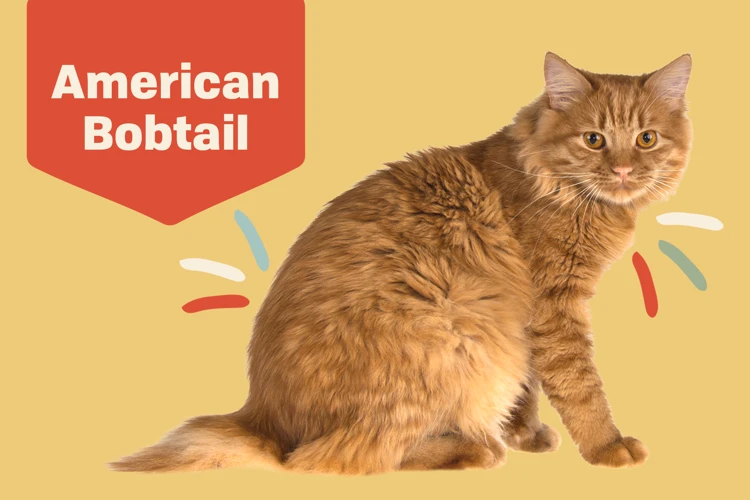
As a responsible cat owner, it’s important for you to understand the nutritional needs of your American Bobtail cat. Proper nutrition plays a crucial role in maintaining their overall health and well-being. In this section, we will cover the different nutritional requirements of American Bobtail cats, including the necessary amounts of protein, fats, vitamins, minerals, and water needed to keep them in top shape. So, let’s dive deeper into understanding these essential nutrients and how they contribute to your feline friend’s health.
Protein Requirement
American Bobtail cats, just like any other feline, are obligate carnivores. This means that they need to eat meat to meet their nutritional needs. Animal-based proteins should make up the majority of their diet. In fact, protein should make up at least 30% of their diet.
Here are some examples of protein-rich foods that your American Bobtail cat can eat:
- Chicken
- Turkey
- Duck
- Beef
- Lamb
- Venison
- Rabbit
- Fish (tuna, salmon, mackerel)
It’s essential to note that the protein in cat food should come from high-quality sources. Look for cat food that has a source of animal protein listed as the first ingredient.
Cat food that contains plant-based protein is not sufficient for the nutritional requirements of felines. The protein contained within plant-based sources is incomplete and not easily digestible by cats. Failing to provide an adequate amount of high-quality protein may result in muscle wasting and weight loss for your American Bobtail cat. It’s important to ensure that your cat’s diet meets their protein requirements.
Fats and Fatty Acids Requirement
While protein is important for a cat’s muscle and tissue development, fats and fatty acids are necessary for energy and overall health. Here is a breakdown of the fats and fatty acids requirement for American Bobtail cats:
| Fats and Fatty Acids Requirement | Details |
|---|---|
| Essential Fatty Acids |
|
| Fat Content in Diet |
American Bobtail cats need a recommended amount of 20-45% fat in their diet. This fat is necessary for energy and weight management, as well as vitamin absorption. However, it is important to note that obese and overweight cats should not be fed a high-fat diet without consulting a veterinarian first. Cats need healthy fats to be part of their diet for several reasons, including:
|
It’s important to make sure your American Bobtail is receiving appropriate amounts of healthy fats and fatty acids in their diet. This will promote a longer and healthier life.
Vitamins and Minerals Requirement
As with humans, vitamins and minerals are essential for a healthy diet for American Bobtail cats. Here are some of the key vitamins and minerals that your feline friend needs, and their benefits:
| Nutrient | Function | Sources |
|---|---|---|
| Vitamin A | Essential for vision, skin health, and immune function. | Liver, fish oil, egg yolks, and dairy products. |
| Vitamin D | Helps with the absorption of calcium, essential for strong bones and teeth. | Fatty fish, egg yolks, and liver. |
| Vitamin E | A powerful antioxidant, essential for a healthy immune system and healthy skin. | Vegetable oils, nuts, seeds, and leafy green vegetables. |
| Vitamin K | Essential for blood clotting. | Green leafy vegetables, liver, and dairy products. |
| B vitamins | Essential for a healthy nervous system, as well as energy production and metabolism. | Meat, fish, poultry, eggs, and dairy products. |
| Calcium | Essential for strong bones and teeth, as well as muscle function and nerve transmission. | Dairy products, fish, and leafy green vegetables. |
| Phosphorus | Essential for bone formation, as well as cell function and energy metabolism. | Meat, fish, poultry, and dairy products. |
| Magnesium | Essential for muscle and nerve function, as well as bone health. | Meat, fish, poultry, and green leafy vegetables. |
| Potassium | Essential for many bodily functions, including muscle and heart function and maintaining proper fluid balance. | Meat, fish, poultry, and many fruits and vegetables. |
| Zinc | Essential for immune function, wound healing, and protein synthesis. | Meat, fish, poultry, and whole grains. |
While it’s important to provide your American Bobtail with a diet that is rich in vitamins and minerals, too much of certain vitamins and minerals can be harmful. For instance, an excess of vitamin A can lead to bone and joint pain, while too much calcium can lead to kidney issues. Always make sure to follow recommended guidelines for your cat’s diet, and consult with your veterinarian if you have any concerns.
Water Requirement
Water is an essential nutrient for all living organisms, including American Bobtail cats. Without access to clean and fresh water, a cat’s body can become dehydrated, leading to serious health problems. In fact, water is so important that it accounts for about 60% of a cat’s body weight.
How much water does an American Bobtail cat need? This depends on a variety of factors, including the cat’s age, activity level, and diet. As a general guideline, it is recommended that cats consume 2.5 to 4.5 ounces (75 to 133 ml) of water per 5 pounds (2.3 kg) of body weight per day. This means that an average 10-pound (4.5 kg) American Bobtail should drink approximately 5 to 9 ounces (150 to 266 ml) of water per day.
However, it’s important to keep in mind that not all cats are great drinkers. Some may have a preference for running water, while others may only consume water when it is mixed with their food. That’s why it’s essential to provide multiple sources of clean and fresh water, including a water bowl and a cat drinking fountain.
What are the signs of dehydration in cats? Dehydration can be difficult to spot, especially since cats tend to hide their symptoms. Some common signs of dehydration in cats include:
– Dry mouth and nose
– Sunken eyes
– Lethargy or lack of energy
– Loss of skin elasticity
– Decreased appetite
– Panting
– Dark yellow urine
– Constipation
HTML TABLE: Water Requirements of American Bobtail Cats
| Cat Weight | Water Intake Per Day (2.5-4.5 oz per 5 lbs of body weight) |
|---|---|
| 5 lbs (2.3 kg) | 2.5-4.5 oz (75-133 ml) |
| 10 lbs (4.5 kg) | 5-9 oz (150-266 ml) |
| 15 lbs (6.8 kg) | 7.5-13.5 oz (222-400 ml) |
| 20 lbs (9.1 kg) | 10-18 oz (296-532 ml) |
It’s crucial to ensure that your American Bobtail is drinking enough water as part of their daily diet. Dehydration can lead to serious health issues such as urinary tract infections, kidney disease, and even death. By monitoring your cat’s water intake and providing multiple sources of clean and fresh water, you can help keep them healthy and hydrated.
Different Types of Cat Food
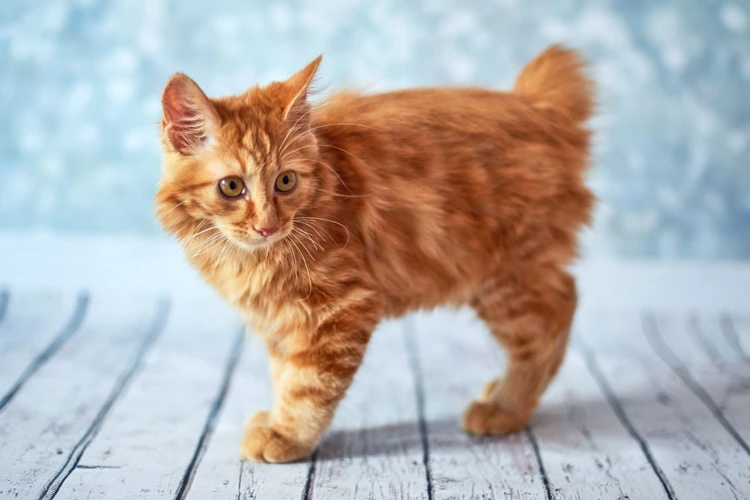
As a devoted pet owner, you want to make sure that your American Bobtail cat is getting the best possible nutrition. With so many different types of cat food available in the market, it can be difficult to choose the right one for your feline. Each variety has its own unique set of pros and cons, and therefore it is important to understand the differences before making a decision. In this section, we’ll take a closer look at the various types of cat food options available to pet owners and the nutritional benefits and drawbacks of each one.
Dry Cat Food
Dry cat food, also known as kibble, is a popular choice among cat owners due to its convenience and affordability. It is a type of cat food that is commercially prepared and comes in small, bite-sized pieces. One of the advantages of dry cat food is that it has a longer shelf life compared to wet cat food. It is also easier to store and does not require refrigeration.
Advantages of Dry Cat Food:
- Convenient to store and serve
- Long shelf life
- Affordable
- May help with dental health by cleaning teeth while a cat chews kibble
However, there are also some drawbacks to feeding your American Bobtail only dry cat food. One of the biggest concerns with a dry cat food diet is that it may not provide enough moisture. Cats are known to have a low thirst drive and can easily become dehydrated, which can cause health problems. Also, some dry cat food is high in carbohydrates and may not provide the necessary protein and fat that American Bobtail cats need to thrive.
Disadvantages of Dry Cat Food:
- May not provide enough moisture
- Some dry cat food is high in carbohydrates
- May not provide enough protein and fat
To ensure that your American Bobtail cat is getting the necessary nutritional requirements, it’s important to select a high-quality dry cat food that is low in carbohydrates and has a sufficient amount of protein and fat. Look for brands that list real meat as the first ingredient and avoid ones that contain fillers such as grains or artificial preservatives.
When feeding your cat dry cat food, it’s important to supplement their diet with enough water. Make sure to provide clean and fresh water at all times and consider moistening the dry cat food with water before serving it to your American Bobtail. This can help ensure that your cat is getting enough hydration throughout the day.
Dry cat food is a convenient and affordable option for cat owners, but it’s important to choose a high-quality brand and supplement your American Bobtail’s diet with enough water to ensure they are getting the necessary nutrients and hydration.
Canned Cat Food
Canned cat food is a popular choice among cat owners because of its convenience and longer shelf life. It typically comes in small cans and can be easily stored in the refrigerator after opening. This type of cat food is also a good source of moisture for your American Bobtail, which can help prevent dehydration.
Advantages of Canned Cat Food:
- Canned cat food has a higher moisture content than dry cat food, which can help prevent urinary tract problems, kidney disease, and dehydration.
- It is easy to digest, making it a good option for cats with sensitive stomachs or digestive issues.
- Canned cat food often has a higher protein content than dry cat food, which is essential for your cat’s growth and health.
- It contains less preservatives and artificial colors or flavors compared to dry cat food.
Disadvantages of Canned Cat Food:
- Canned cat food can be more expensive than dry cat food.
- It can sometimes have a stronger odor compared to dry cat food, which can be unpleasant for some cat owners.
- Certain brands may contain a high amount of fillers, such as carbs or grains, which can lead to weight gain and health problems for your cat in the long run.
When choosing canned cat food for your American Bobtail, make sure to read the label carefully. Look for high-quality ingredients and avoid brands that contain fillers, by-products, or artificial preservatives. Additionally, consider your cat’s age and activity level, as well as any dietary requirements or allergies they may have. Your veterinarian can also provide recommendations on the best canned cat food brands for your American Bobtail. Lastly, introduce new brands or flavors of canned cat food slowly to avoid upsetting your cat’s stomach.
Semi-Moist Cat Food
Semi-moist cat food is a type of cat food that is not as wet as canned cat food, yet not as dry as kibble. This type of cat food is often preferred by picky eaters, as it has a soft and chewy texture that’s reminiscent of meat. However, it is important to note that semi-moist cat food is also a type of cat food that should be used in moderation.
The Advantages of Semi-Moist Cat Food
One of the advantages of semi-moist cat food is that it has a longer shelf life compared to its canned counterpart. This is because semi-moist cat food is preserved with chemicals that help to prevent bacterial growth. Additionally, semi-moist cat food contains a high moisture content, which helps to keep your American Bobtail cat hydrated. Semi-moist cat food is also a convenient option for cat owners, as it can be easily purchased at pet stores and does not require refrigeration after opening.
The Disadvantages of Semi-Moist Cat Food
The main disadvantage of semi-moist cat food is that it tends to contain more artificial preservatives and additives than other types of cat food. Additionally, semi-moist cat food is often higher in sugar and salt content than other types of cat food. This is because sugar and salt help to preserve the food’s moisture content and prevent microbial growth. Cat owners should also be aware that semi-moist cat food is often more expensive than kibble or canned cat food.
The Nutritional Content of Semi-Moist Cat Food
Semi-moist cat food is often composed of a blend of meat by-products, grains, and additives that help to preserve the food’s texture and flavor. This type of cat food tends to be high in carbohydrates and low in protein compared to high-quality cat food alternatives. However, some semi-moist cat food brands may contain higher quality ingredients, such as real meat or fish, and can have a more balanced nutritional profile.
Below is a table that shows the nutritional content of a typical semi-moist cat food.
| Nutrient | Amount per 100g |
|---|---|
| Protein | 25g |
| Fat | 10g |
| Fiber | 2g |
| Moisture | 35g |
| Carbohydrates | 28g |
As with any type of cat food, it is always important to read the label and check the nutritional content before making a purchase. It is recommended to consult with your veterinarian to determine if semi-moist cat food is the best option for your feline friend’s unique nutritional needs.
Raw Food Diet
A raw food diet for American Bobtail cats, also known as the “prey model,” is a diet consisting mainly of raw meat, bone, and offal. This diet aims to imitate what cats would eat in the wild. Advocates of the raw food diet argue that it can lead to better digestion, healthier skin and coat, and improved immune function in cats. However, there are some considerations to keep in mind before deciding to switch your American Bobtail to a raw food diet.
Pros of a Raw Food Diet
One of the main benefits of a raw food diet is that it provides a high-quality source of protein that is rich in essential amino acids. The diet also contains more moisture than dry cat food, which can help prevent dehydration and promote bladder and kidney health. Additionally, some cat owners have reported that their cats on a raw food diet have improved energy levels and overall health.
Cons of a Raw Food Diet
One of the main risks of a raw food diet is the potential for bacterial contamination. Raw meat can contain harmful bacteria such as Salmonella and E. coli, which can be dangerous for cats and even their owners. There is also a risk of choking on bones or developing gastrointestinal problems from unbalanced diets or sudden changes in food. It’s important to consult with a veterinarian or pet nutritionist before making any significant dietary changes for your cat.
Summary of a Raw Food Diet
Here’s a summary of the pros and cons of a raw food diet for American Bobtail cats:
| Pros | Cons |
|---|---|
| High-quality source of protein | Risk of bacterial contamination |
| More moisture than dry food | Risk of choking on bones |
| Potential for improved energy levels and overall health | Unbalanced diets can cause gastrointestinal problems |
A raw food diet for American Bobtail cats is a controversial topic with both pros and cons. It’s important to carefully evaluate the potential risks and benefits before making any changes to your cat’s diet. If you do decide to pursue a raw food diet, it’s essential to do it correctly and safely, with guidance from a veterinarian or pet nutritionist.
Homemade Diet
Making homemade cat food is a great way to control what your American Bobtail is eating. However, it should be done with caution as it requires careful planning and attention to detail. Here are some things to keep in mind when considering a homemade diet for your cat:
- Protein: Like any other cat, American Bobtails require a high level of protein in their diet. Sources of protein that can be used in a homemade diet include chicken, turkey, beef, and fish.
- Fats: Fats are a crucial part of your cat’s diet, as they provide a source of energy. However, not all fats are created equal, and it’s important to use healthy sources of fat in your homemade cat food. Some healthy choices include olive oil, flaxseed oil, and fish oil.
- Vegetables: While cats are carnivores and require a meat-based diet, adding some vegetables to their food can provide additional vitamins and minerals. Some safe vegetables for cats include carrots, green beans, and pumpkin.
- Calcium: Cats require a good source of calcium in their diet. However, it’s important to use caution when adding calcium supplements as too much can lead to kidney problems.
- Consult Your Vet: Before starting a homemade diet, it’s important to consult with your veterinarian. They can provide guidance on what ingredients and proportions will be best for your cat based on their individual needs.
While making homemade cat food can be time-consuming and requires careful consideration, it can be a great option for some pet owners who want to control the ingredients their cat is consuming. However, it’s important to remember that a well-balanced and nutritious diet is crucial for your American Bobtail’s overall health and well-being.
How to Choose the Right Cat Food for Your American Bobtail
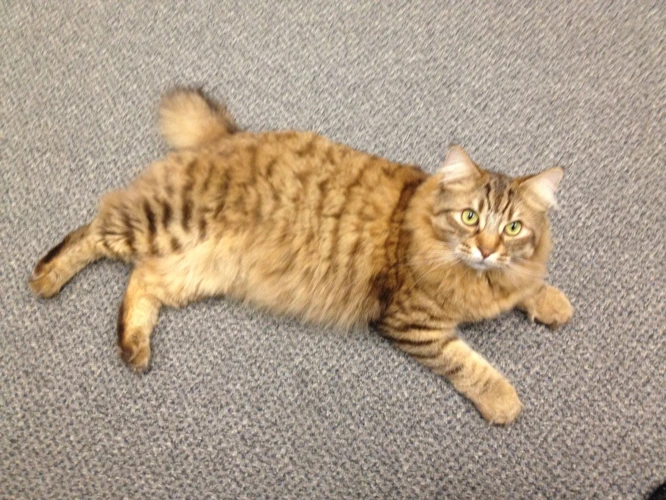
As a loving owner of an American Bobtail, you want to provide the best possible care for your furry companion, including choosing the right cat food. However, the wide variety of food options coupled with conflicting advice from different sources can make the process overwhelming. Don’t worry – with some careful considerations, you can confidently choose the right food to meet the nutritional needs of your American Bobtail. In this section, we’ll guide you through the process of selecting the best cat food for your feline friend.
Read the Label
One of the most essential steps in choosing the right cat food for your American Bobtail is to carefully read the label. This will provide you with valuable information on the ingredients, nutritional makeup, and feeding guidelines that will help you determine if the food is right for your pet.
When reading the label, keep in mind the following important factors:
| Ingredient list: | The first few ingredients listed on the label, usually make up the majority of the food. Look for lean sources of animal protein, such as chicken or turkey, as the primary ingredient. Avoid food that lists fillers or by-products as the main ingredients. |
| Guaranteed Analysis: | This section lists the minimum and maximum amounts of fat, protein, fiber, and moisture in the food. Make sure that the food meets the minimum standards for protein and fat required for your American Bobtail. |
| Feeding Guidelines: | The amount of food recommended on the label is generally an estimate of what an average cat needs. Adjust the amount based on your pet’s age, activity level, and overall health. Overfeeding can lead to obesity and other health problems. |
| AAFCO Statement: | The American Association of Feed Control Officials (AAFCO) sets the standards for pet food in the U.S. Look for cat food that meets AAFCO’s nutritional requirements. A food that is “complete and balanced” will provide all the necessary nutrients that your American Bobtail needs. |
Keep in mind that marketing claims such as “premium”, “natural”, or “organic” do not necessarily guarantee the quality of the cat food. Focus on the nutritional content and ingredients when deciding on the best food for your American Bobtail.
Consider Age and Activity Level
Taking into consideration the age and activity level of your American Bobtail cat is crucial in selecting the right cat food that meets their nutritional needs. Here are some factors to consider:
Age:
- For kittens, it is important to choose a cat food that is high in calories, protein, and fat to support their growth and development. Look for cat food labeled “kitten formula”.
- Adult American Bobtail cats require a balanced diet that meets their nutritional needs. Choose cat food labeled “adult formula” or “all life stages”.
- Senior cats may have different nutritional requirements such as lower calories, higher fiber, and extra vitamins. Look for cat food formulated specifically for senior cats.
Activity Level:
- If your American Bobtail cat is highly active and enjoys running around and playing, they may require a cat food that is higher in calories and protein to fuel their energy needs. Look for cat food labeled “active” or “high-performance formula”.
- If your cat is less active and prefers lounging around, they may require a cat food that is lower in calories to maintain a healthy weight. Look for cat food labeled “less active” or “indoor formula”.
Remember, feeding your American Bobtail cat the right cat food that is appropriate for their age and activity level can promote overall health and longevity. If you are unsure what type of cat food to choose, consult with your veterinarian for recommendations.
Pick Quality Over Quantity
When it comes to choosing the right food for your American Bobtail, it’s important to remember to prioritize quality over quantity. Here are some tips to help you pick the best possible food for your feline friend:
- Look for high-quality ingredients: When researching different cat food brands, take some time to read the ingredients list on the label. The first few ingredients should be high-quality protein sources such as chicken or turkey, not fillers like corn and wheat.
- Avoid artificial additives: Artificial preservatives, colors, and flavors can be harmful to your furry friend. Look for foods with natural preservatives like vitamin E instead.
- Consider your cat’s age and health: Kittens and senior cats may have different nutritional needs than adult cats, so be sure to look for foods formulated specifically for their age group. If your cat has any health issues, talk to your veterinarian for advice on what type of food would be best for them.
- Pay attention to the guaranteed analysis: All cat food labels should include a guaranteed analysis that lists the minimum percentage of protein and fat, and the maximum percentage of fiber and moisture. Make sure the food you choose meets your cat’s nutritional needs based on this analysis.
- Choose a reputable brand: Look for cat food brands with a good reputation for quality and safety. You can research online or ask your veterinarian for recommendations.
Remember, your American Bobtail’s diet plays a significant role in their overall health and wellbeing, so it’s essential to choose the best possible food for them. By prioritizing quality over quantity, you can help ensure that your furry friend gets all the nutrients they need to thrive.
Ask Your Vet for Recommendations
When it comes to finding the right cat food for your American Bobtail, it’s crucial to consult with a trusted professional like your veterinarian. Your vet may have some valuable recommendations based on your cat’s age, medical history, activity level, and more. Here are some tips to keep in mind when asking your vet for recommendations:
- Be honest about your cat’s health concerns: Share any concerns you have about your cat’s health, such as digestive issues or weight problems. This information can help your vet recommend a suitable diet plan for your furry friend.
- Ask about specific brands or types of food: Your vet may have some specific brands or types of food that they recommend based on their experience and knowledge. Don’t hesitate to ask for their expert opinion.
- Discuss any medication your cat is taking: Some medications can affect your cat’s appetite or create digestive problems, so it’s important to let your vet know what medications your cat is taking before following their dietary advice.
- Consider your budget: High-quality cat food can be expensive, so let your vet know your budget and ask if they have any recommendations that fit your financial needs.
- Ask about feeding guidelines: Your vet can provide guidance on how much and how often you should feed your American Bobtail based on their age, weight, and activity level.
Remember, every cat is unique and may have different nutritional needs. Working with your vet to develop a personalized nutrition plan for your American Bobtail is the best way to ensure they stay healthy and happy for years to come.
Keep Introducing Variations but Slowly
It is important to introduce variations in your American Bobtail’s diet but it needs to be done slowly and carefully. This is because sudden changes in their diet can cause digestive problems and upset their stomach.
Benefits of Introducing Variations
Introducing variations in your American Bobtail’s diet helps to provide them with a range of nutrients that they need. Different types of food have different nutritional profiles which means that by feeding them a combination of different types of food, you can ensure that they are getting all the nutrients they need. It also prevents them from getting bored with their food which can lead to them refusing to eat.
Introduce Variations Slowly
When introducing new types of food, it is important to do it slowly. Start by introducing a small amount of the new food while mixing it with their regular food. Gradually increase the proportion of the new food while decreasing the amount of their regular food. This will help their digestive system to adjust to the new food and prevent any digestive issues.
Monitor Your Cat’s Reaction
While introducing variations, it is important to monitor your cat’s reaction to the new food. If your cat shows any signs of digestive problems such as vomiting, diarrhea or constipation, it may indicate that they are not tolerating the new food well. In such cases, you should stop introducing the new food and switch back to their regular food.
Types of Variations to Introduce
There are different types of variations you can introduce in your American Bobtail’s diet which include:
| Type of Variation | Description |
|---|---|
| Flavor | Introduce different flavors of cat food such as chicken, beef or fish. |
| Texture | Introduce different textures of cat food such as dry kibble, canned food or semi-moist food. |
| Brand | Introduce different brands of cat food to provide a variation in nutritional profile and ingredients. |
| Homemade Food | Try to introduce homemade cat food occasionally with vet’s approval, This introduces a homemade touch with different nutritional profiles and ingredients. |
Conclusion
All in all, introducing variations in your American Bobtail’s diet is important to ensure that they get all the nutrition they need and prevent them from getting bored with their food. However, it needs to be done gradually and carefully. Be sure to monitor their reaction and consult with your vet if you have any concerns or questions.
What Foods to Avoid Feeding Your American Bobtail
As a responsible cat owner, it’s important to know what foods to avoid feeding your American Bobtail. While it’s tempting to give your furry friend table scraps or human food, certain foods can have detrimental effects on your cat’s health. In order to keep your American Bobtail healthy and happy, it’s crucial to steer clear of certain foods and always prioritize a well-balanced and nutritious diet. In this section, we will explore the types of foods you should exclude from your cat’s diet.
Toxic Foods
It’s important to know which foods are toxic to American Bobtail cats, as consuming these can lead to serious illness or even be fatal. Some common foods that are toxic to cats include:
| Food | Symptoms |
|---|---|
| Chocolate | Vomiting, diarrhea, rapid breathing, tremors, seizures |
| Caffeine (found in coffee, tea, energy drinks, etc.) | Hyperactivity, restlessness, increased heart rate, tremors, seizures |
| Alcohol | Vomiting, diarrhea, difficulty breathing, tremors, coma |
| Onions and Garlic | Anemia (depletion of red blood cells) |
| Grapes and Raisins | Vomiting, diarrhea, lethargy, dehydration, kidney failure |
| Avocado | Vomiting, diarrhea, difficulty breathing, fluid buildup in chest, pancreatitis |
It’s important to note that this list is not exhaustive and there may be other foods that are toxic to cats as well. If you suspect that your American Bobtail has ingested something toxic, it’s crucial to contact your vet immediately. Early detection and treatment can make a big difference in your cat’s recovery. Additionally, you should always keep toxic foods and substances out of your cat’s reach to prevent accidental ingestion.
Foods that Don’t Have Nutritional Value
When it comes to feeding your American Bobtail cat, it’s important to know which foods can provide the necessary nutrients and which ones are a waste of their nutritional needs. Here are some foods that don’t have nutritional value that should be avoided:
- Table Scraps: Sharing leftovers with your cat might seem like a fun idea, but it can be harmful to their health. Table scraps often contain high amounts of fat, salt, and other unhealthy ingredients that can lead to obesity and other health issues.
- Processed Foods: Processed foods, including junk food like chips and candy, are not only unhealthy for humans but also for cats. These types of foods often contain artificial ingredients, preservatives, and other chemicals that can be harmful to your cat’s health.
- Alcohol: It’s never a good idea to give your cat alcohol, even in small amounts. Alcohol can be toxic to cats and can lead to serious health problems, including liver and kidney damage.
- Caffeine: Just like alcohol, caffeine is also toxic to cats. It can cause restlessness, rapid breathing, heart palpitations, muscle tremors, and even death in severe cases.
- Bones: Although American Bobtail cats are known for their love of meat, giving them bones to chew on is not a good idea. Bones can break and splinter, which can cause choking, blockages, and other serious health issues.
Instead of feeding your American Bobtail cat these types of foods, make sure to stick to a well-balanced diet that includes high-quality proteins, essential fats and fatty acids, vitamins, minerals, and plenty of water. For further guidance on what to feed your American Bobtail cat, consult with your veterinarian.
Foods High in Carbohydrates
Carbohydrates are a necessary component of a cat’s diet, but too much of it can lead to health problems like obesity and diabetes. It’s important to look for cat foods that have a moderate amount of carbohydrates. Here are some examples of foods that are high in carbohydrates that you should try to avoid or limit in your American Bobtail’s diet:
| Foods High in Carbohydrates | Description |
|---|---|
| Grains (wheat, rice, corn) | Grains are often used as fillers in cat food and can be high in carbohydrates. |
| Potatoes | Although they aren’t inherently bad for cats, they are high in starch and can raise carbohydrate levels in cat food. |
| Peas | Peas are often used as a source of plant-based protein in cat food, but they are also high in carbohydrates. |
| Legumes | Legumes, like chickpeas and lentils, are often used as a substitute for grains in cat food, but they can also be high in carbohydrates. |
It’s important to note that not all carbohydrates are bad, and some are necessary for your cat’s health. However, it’s important to pay attention to the sources of carbohydrates in your cat’s food and try to avoid those that are high in simple sugars or refined carbohydrates.
By limiting the amount of carbohydrates in your American Bobtail’s diet, you can help keep them at a healthy weight and reduce the risk of health problems associated with excess carbohydrates consumption. Instead, look for cat foods that prioritize protein and healthy fats, as these are the most important components of a cat’s diet.
Foods High in Salt, Fat, and Sugar
Feeding your American Bobtail cat foods that are high in salt, fat, and sugar can lead to serious health issues. Here are some examples of foods that should be avoided.
- Processed Meats: Deli meats, hot dogs, and bacon are often high in salt and fat. Eating these regularly can increase the risk of obesity and heart disease.
- Canned Foods: Many canned foods contain added salt and sugar to enhance the taste. These foods also tend to be high in calories and can lead to weight gain if consumed frequently.
- Sweets: While cats do enjoy the taste of sweet foods, indulging in them too often can lead to obesity and even diabetes. Avoid feeding your American Bobtail cat human sweets such as cookies, cakes, and chocolate.
- Fast Food: Avoid feeding your cat fast food or leftover scraps from your own meals. These foods are usually high in salt, fat, and sugar and can cause digestive issues.
- Dairy Products: While dairy products are not necessarily harmful, they are often high in fat and can lead to weight gain if consumed in excess. Additionally, many cats are lactose intolerant and may experience digestive issues if they consume dairy products.
It’s important to note that occasional treats are okay in moderation, but should not make up a significant portion of your cat’s diet. As always, consult with your veterinarian and follow their recommendations for feeding your American Bobtail cat a healthy and balanced diet.
Conclusion
In conclusion, it’s crucial to provide your American Bobtail cat with a balanced diet that meets its nutritional requirements. A healthy diet not only enhances the overall health and well-being of your pet but also prevents the development of chronic diseases. Remember to always provide your feline friend with fresh water and to choose a cat food that is appropriate for its age and activity level.
When choosing cat food, it’s essential to read the label carefully and understand the ingredients. Look for high-quality protein sources and avoid cat food that contains fillers or preservatives. If you’re unsure which type of cat food to choose, always consult with your vet for recommendations.
Finally, remember to avoid feeding your American Bobtail cat foods that are toxic, high in carbohydrates, or lack nutritional value. Treats should always be given in moderation, and any changes to your cat’s diet should be introduced slowly.
By following these guidelines and providing your American Bobtail cat with a nutritious diet, you can ensure they lead a happy and healthy life. Remember, a healthy cat is a happy cat, and it all starts with their diet.
Frequently Asked Questions
1. How much protein do American Bobtail cats need in their diet?
On average, American Bobtail cats need around 30% of their daily diet to come from protein sources.
2. What type of fats and fatty acids do American Bobtail cats require?
American Bobtail cats require omega-3 and omega-6 fatty acids, which can be found in fish oils and chicken fat.
3. Do American Bobtail cats require supplements?
Most American Bobtail cats do not require supplements if they are fed a well-balanced diet. However, some cats may benefit from supplements such as probiotics or joint support supplements.
4. Is semi-moist cat food a good option for American Bobtail cats?
Semi-moist cat food is not the best option for American Bobtail cats as it is high in sugar and preservatives. It should be given as a treat, not a regular meal.
5. Can American Bobtail cats eat a vegetarian diet?
No, American Bobtail cats are obligate carnivores and require meat in their diet to survive.
6. Should I feed my American Bobtail cat a raw food diet?
A raw food diet may be a good option for some American Bobtail cats, but it is important to ensure that the diet is balanced and nutritionally complete. Consult with a veterinarian before starting a raw food diet.
7. Can American Bobtail cats eat the same food as other cat breeds?
Yes, American Bobtail cats can eat the same food as other cat breeds as long as the food meets their nutritional requirements.
8. What are some signs that my American Bobtail cat is not getting enough nutrients?
Signs that your American Bobtail cat is not getting enough nutrients include weight loss, lethargy, and a dull coat.
9. How often should I change my American Bobtail cat’s food?
You should only change your American Bobtail cat’s food if necessary, such as if they have a health issue or if the food is not meeting their nutritional needs. Gradually transition to the new food to avoid digestive issues.
10. Can I give my American Bobtail cat table scraps?
Table scraps are not recommended as they can be high in fat, salt, and other substances that can be harmful to cats. Stick to feeding them a well-balanced cat food diet.

